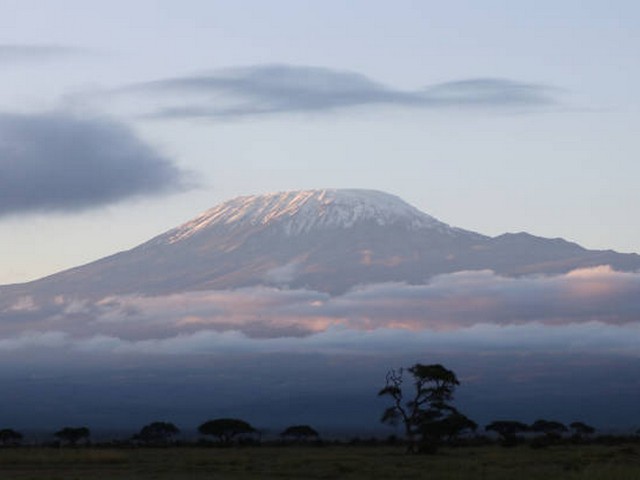Kilimanjaro Timelapse Photography: Capturing Clouds and Stars
Welcome to a journey where the majestic peaks of Mount Kilimanjaro meet the scintillating skies. At the Kilimanjaro Centre for Trekking and Ecotourism (KCTE), we are as passionate about preserving memories as we are about preserving nature. Through this blog, we will guide you on how to capture the breathtaking dance of clouds and stars over Africa’s highest peak through the art of timelapse photography.
The Magic of Kilimanjaro
Mount Kilimanjaro, standing proudly at 5,895 meters above sea level, is not just a mountain; it’s an icon. The changing landscapes as you ascend, the diverse ecosystems, and the stunning vistas offer more than just a trekking experience—they offer a photographer’s paradise.
Why Timelapse Photography on Kilimanjaro?
Timelapse photography allows you to capture a sequence of images at set intervals to record changes that happen slowly over time. When you play those sequences at normal speed, time appears to be moving faster. Imagine capturing the slow dance of the clouds swirling around the snow-capped summit or the Milky Way marching across the night sky—timelapse photography on Kilimanjaro creates not just images, but stories.
1. Preparing for Your Photographic Adventure
Choosing Your Gear
When it comes to timelapse photography at high altitudes, the right gear is crucial. A sturdy tripod is a must to avoid any camera shake. A reliable camera that can handle extended exposure times and a programmable intervalometer (or a built-in camera feature) for taking shots at regular intervals are important.
Understanding the Settings
To capture the perfect timelapse, understanding your camera’s settings is key. For day-to-night transitions, known as the ‘holy grail’ of timelapse photography, mastering manual mode is essential. Adjust your exposure settings as the light changes from dusk to the starry night sky.
2. Best Spots on Kilimanjaro for Timelapse Photography
Uhuru Peak
At the summit, the clouds often lie below you during the early mornings. Capturing the sunrise here, with the clouds lit in hues of orange and pink, makes for a surreal experience.
Shira Plateau
With its relatively flat terrain and panoramic views, it’s an excellent spot for capturing the vastness of the mountainous region and the dramatic cloud movements at sunset.
3. The Dance of the Clouds and Stars
Capturing Clouds
Mount Kilimanjaro’s weather adds a dynamic element to cloud timelapse photography. The best times are during the early morning or late evening when the light adds a dramatic touch to the fast-moving clouds.
Capturing Stars
Kilimanjaro’s clear nights are perfect for astrophotography. The absence of light pollution ensures that the stars shine the brightest, with the Milky Way clearly visible stretching across the sky.
Tips and Tricks for Successful Timelapse Shots
- Battery and Memory: Ensure you have extra batteries and memory cards. The cold can drain batteries quickly.
- Weather Awareness: Conditions can change rapidly. Always be prepared and adjust your plans accordingly.
- Patience is Key: Timelapse photography requires patience. Set up your shot, and let your equipment do its job.
Join Us at KCTE
At KCTE, we not only offer guided treks that ensure safety and comfort but also specialized photography tours led by professionals who understand both the terrain and the art of photography. Whether you’re an amateur eager to learn or a professional photographer wanting to add breathtaking timelapse shots of Kilimanjaro to your portfolio, we have something for everyone.
Frequently Asked Questions about Kilimanjaro Timelapse Photography
Q1: What is the best time of year for timelapse photography on Kilimanjaro?
A1: The best times are during the dry seasons, from late June to October and from late December to early March.
Q2: Do I need special permits for photography on Kilimanjaro?
A2: No special permits are required for photography for personal use. However, drones or commercial shoots might require permissions.
Q3: How can I ensure my camera equipment is protected from the cold?
A3: Use insulated camera bags, and keep silica gel packets inside to avoid condensation. Keeping batteries close to your body can help keep them warm.
Q4: Can beginners in photography join your tours?
A4: Absolutely! Our tours cater to all skill levels, and our guides provide tips and support throughout the journey.
Capture the Essence of Kilimanjaro
Timelapse photography on Kilimanjaro offers more than just beautiful images; it offers a unique way to experience and capture the essence of this magnificent mountain. Let the Kilimanjaro Centre for Trekking and Ecotourism (KCTE) guide you to the top, literally and photographically. Book your Kilimanjaro climbing adventure with us today and take home memories that move and inspire.
Join us, and let’s watch the clouds roll by and the stars twinkle in the clear African sky, together, one frame at a time.




